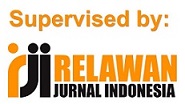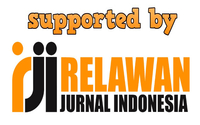STUDENTS’ MASTERY OF SIMPLE PRESENT TENSE IN VERBAL SENTENCES: A DESCRIPTIVE STUDY AT SMP BANDAR KLIPPA
Abstract
Full Text:
PDFReferences
Arikunto, S. (2019). Prosedur penelitian: Suatu pendekatan praktik (Revised ed.). Jakarta, Indonesia: Rineka Cipta.
Creswell, J. W., & Creswell, J. D. (2023). Research design: Qualitative, quantitative, and mixed methods approaches (6th ed., L. Fargotstein, Ed.). Los Angeles, CA: SAGE Publications, Inc.
Dulay, H., Burt, M., & Krashen, S. D. (1982). Language two. New York, NY: Oxford University Press.
Herlina, H., & Ramasari, M. (2018). Students’ ability in producing sentences of simple present tense at STMIK Musi Rawas. Linguistic, English Education and Art (LEEA) Journal, 1(2), 154–167. https://api.semanticscholar.org/CorpusID:65389454
McLendon, L. (2017). The perfect English grammar workbook: Simple rules and quizzes to master today’s English language. Berkeley, CA: Zephyros Press. https://doi.org/10.32520/eji.v3i1.466
Mulyaningrum, L. A. (2019). Students’ ability in making wh-questions: A descriptive study of the second-grade students of SMP Negeri 6 Purwokerto in academic year 2018/2019 (Undergraduate thesis, Universitas Muhammadiyah Purwokerto). Retrieved from https://repository.ump.ac.id
Napratilora, M., & Siagian, S. Y. (2019). Tenses understanding in using the English language. EJI (English Journal of Indragiri): Studies in Education, Literature, and Linguistics, 3(1), 29–38.
Oviogun, P. V., & Veerdee, P. S. (2020). Definition of language and linguistics: Basic competence. Macrolinguistics and Microlinguistics, 1(1), 1–12. Retrieved from https://mami.nyc/index.php/journal/article/download/1/37/36
Saengboon, S., Panyaatisin, K., & Toomaneejinda, A. (2022). The roles of grammar in English language teaching: Local viewpoints. PASAA: Journal of Language Teaching and Learning in Thailand, 63, 179–204. Retrieved from https://files.eric.ed.gov
Sudaryono, S. (2023). Metodologi penelitian: Kuantitatif, kualitatif, dan mix method. Depok, Indonesia: Rajawali Press.
Sugiyono. (2022). Metode penelitian kuantitatif, kualitatif, dan R&D. Bandung, Indonesia: Alfabeta.
Suhadi, J. (2016). Course in English structure. Medan, Indonesia: LPPM UISU Press.
Widoyoko, E. P. (2017). Teknik penyusunan instrumen penelitian. Yogyakarta, Indonesia: Pustaka Belajar.
DOI: https://doi.org/10.30743/jol.v7i2.12002
Refbacks
- There are currently no refbacks.
Fakultas Sastra
Universitas Islam Sumatera Utara (UISU)
Jln. Sisingamangaraja Teladan Barat Medan, Indonesia
Phone: +627869911 | e-mail: journal_language@sastra.uisu.ac.id










